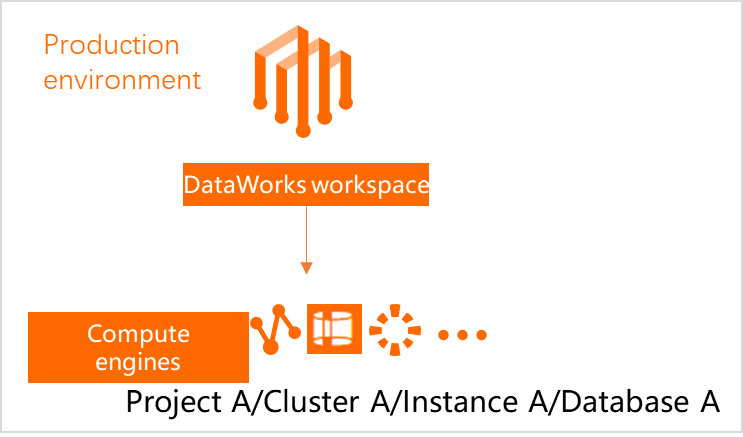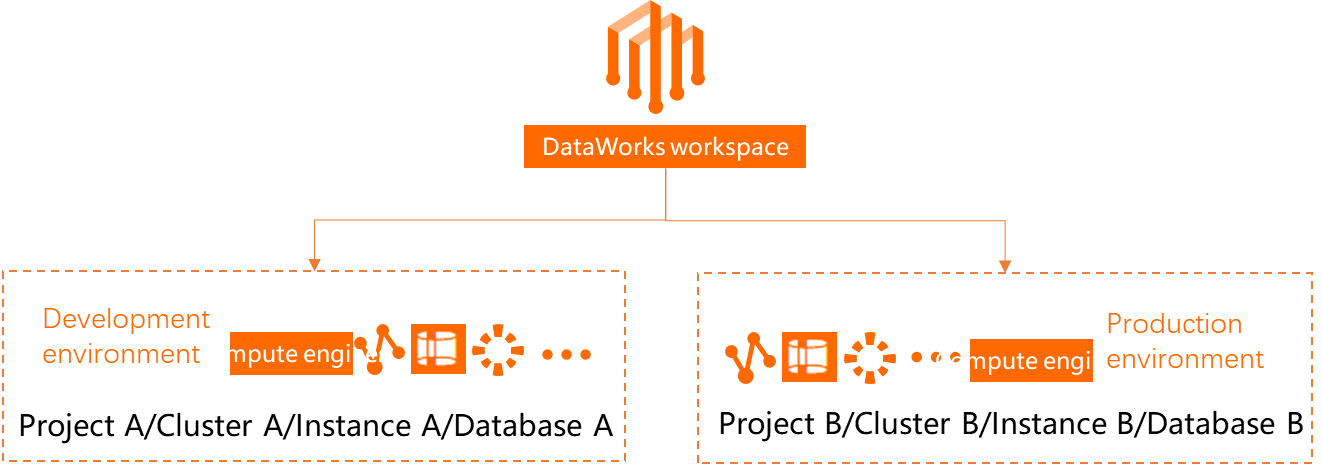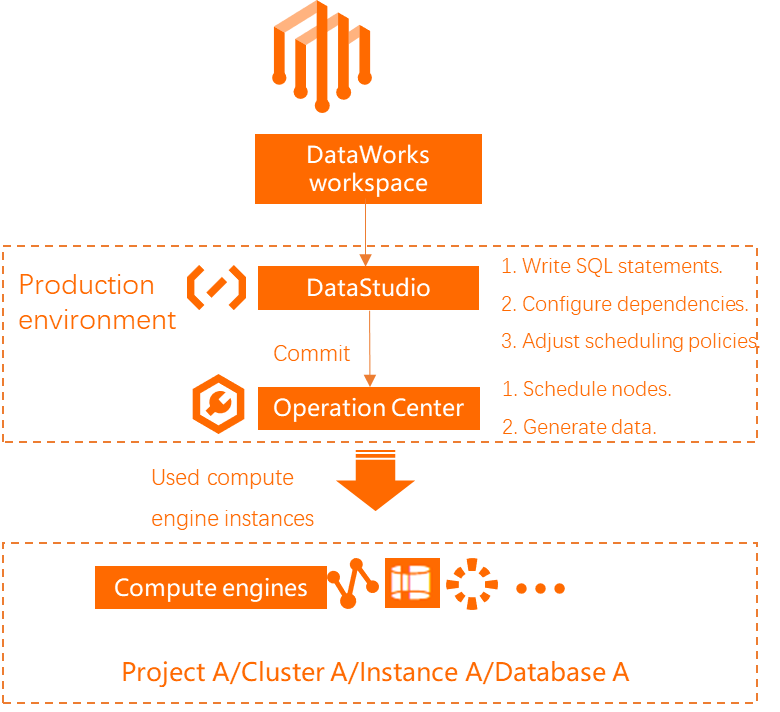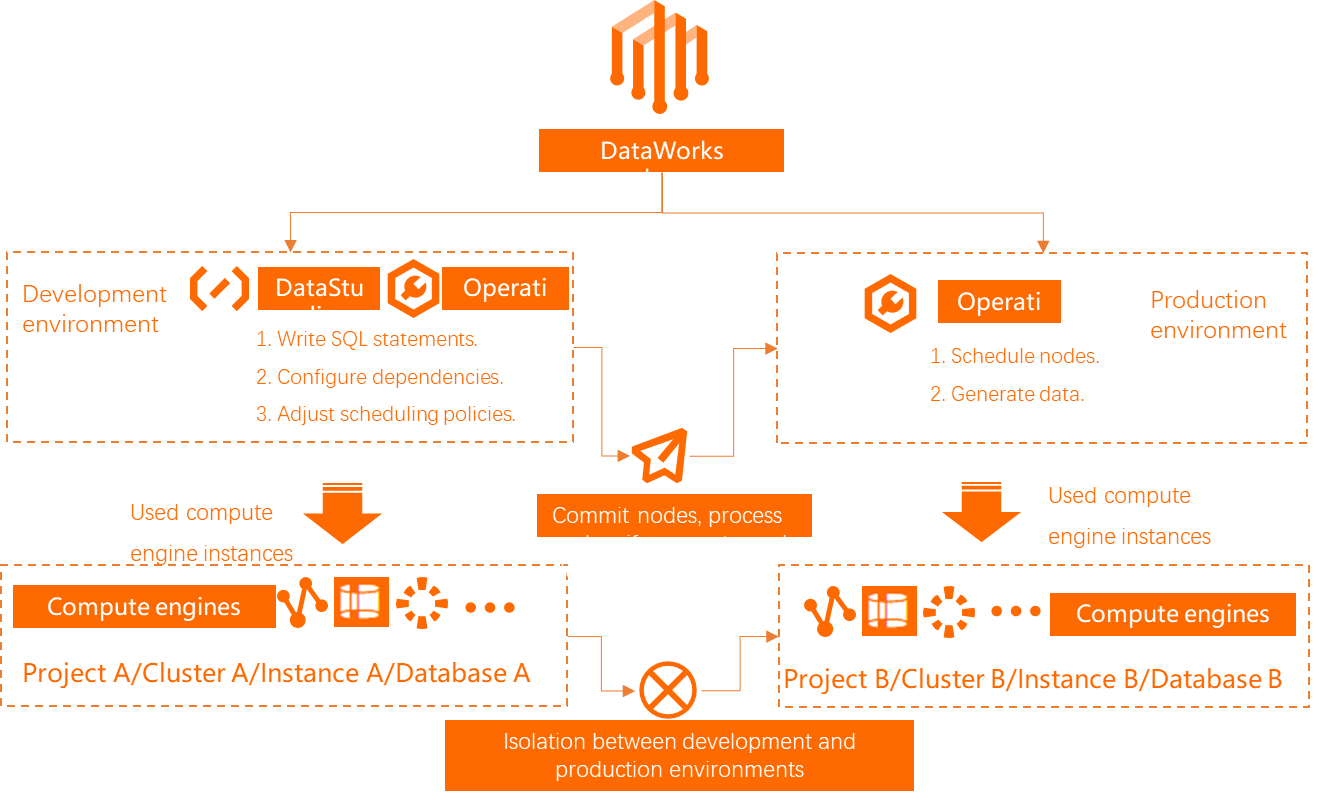DataWorks offers two workspace modes, basic and standard, to meet various security requirements for data production. This topic describes the differences between these two modes, including their physical architectures and their impact on development activities.
Background information
This topic contains the following sections.
Category | Description |
Describes the physical architectures of workspaces in basic and standard modes. | |
Impact of different workspace modes on the development and O&M of production tasks | Describes the mechanisms for task development and O&M, which are based on the physical properties of the workspace. |
Comparison of the pros and cons of different workspace modes | Compares the pros and cons of different workspace modes. |
Diagram of the impact of standard mode workspaces on the user workflow | Explains the process controls in a standard mode workspace and shows how different roles collaborate. |
Data sources used by DataWorks modules in different workspace modes | A basic mode workspace has only a production environment, whereas a standard mode workspace has both development and production environments. This section describes the mapping between these environments and DataWorks modules. |
How to isolate the development and production environments in basic mode | Describes how to isolate the development and production environments in a basic mode workspace. |
Precautions
Different workspace modes have different requirements for creating data sources. In a standard mode workspace, you must create physically separate data sources for the development and production environments to ensure isolation. For more information about how to add data sources to a workspace, see Data Source Management.
Your ability to access resources across projects or databases depends on the properties of the data source. If you add separate data sources for the development and production environments, your ability to access production tables, resources, or functions from the development environment is determined by the properties of the data source.
In a standard mode workspace, tasks in the development environment are not scheduled by default. They are scheduled to run periodically only after you deploy them to the production environment.
Introduction to basic and standard modes
The following table compares the physical architecture of workspaces in basic and standard mode.
You can create a workspace in either mode to experiment with DataWorks. However, for actual development, we recommend that you use standard mode to isolate code, computing resources, and permissions between the development and production environments, and to control the task deployment process.
If you are already using a basic mode workspace and want to keep its code, you can upgrade the workspace to standard mode. For more information, see Upgrade a workspace mode.
This topic compares basic and standard mode workspaces from the following aspects.
Aspect | Basic mode | Standard mode (recommended) |
Number of data sources | One DataWorks workspace corresponds to one data source. | One DataWorks workspace corresponds to two data sources. This lets you isolate the data sources for the development and production environments. Note To isolate the development and production environments, you must create physically separate data sources for each.
|
Corresponding DataWorks environment | One data source serves as the DataWorks production environment. | One data source serves as the DataWorks development environment, and the other serves as the production environment. Note You can create different data sources for the development and production environments. For example:
|
Impacts of different workspace modes on the development and O&M of production tasks
Comparison | Basic mode | Standard mode (recommended) |
Differences in development process control for production tasks | After you commit a task, it is sent to the scheduling system to run periodically and generate data. No deployment is required. (Commit → Production)
| You must first commit a task to the development environment and then deploy it to the production environment. After deployment, the task is automatically scheduled to run. (Commit → Deploy → Production) Note In standard mode, only tasks in the production environment are automatically scheduled.
|
Differences in O&M permission control for production tasks | Developers can directly edit the code of production tasks. | Developers can only edit and commit code in the Data Development interface. They cannot directly deploy the code to the production environment. A user must have O&M permissions to deploy code to the production environment. Users with the Project Owner, Administrator, or O&M role have this permission.
|
Differences in production data permission control | Developers can directly use production data for testing, which poses a security risk. | In the development environment, developers can use test data for testing. They can also use data from production tables for verification after they are granted the required permissions or their permission requests are approved. Note
|
Differences in data access identity | A single identity is used to directly access the production environment. For data sources such as MaxCompute, Hologres, EMR, and CDH, access identities can be an Alibaba Cloud account, a RAM user, a RAM role (for MaxCompute only), or the task owner. Note For other compute engines, such as AnalyticDB for MySQL and AnalyticDB for PostgreSQL, permissions depend on the account that you bind to each environment when you create the data source. The permissions of the account in DataWorks are the same as its permissions in the database. |
Note MaxCompute, Hologres, EMR, and CDH
For other compute engines, such as AnalyticDB for MySQL and AnalyticDB for PostgreSQL, permissions depend on the account that you bind to each environment when you create the data source. The permissions of the account in DataWorks are the same as its permissions in the database. |
Comparison of the pros and cons of different workspace modes
Comparison | Basic mode | Standard mode |
Advantages | Simple, convenient, and easy to use. You only need to grant the Developer role to data developers to complete all data warehouse development work. | Secure and standardized.
|
Disadvantages | Poses risks of instability and insecurity.
| The process is more complex. Typically, a single person cannot complete the entire data development and production workflow. |
Sample scenario: Impact of standard mode on the user workflow
As shown in the following figure, the isolation between the development and production environments in standard mode affects processes such as data model design, data processing logic, and code deployment.
Appendix: Data sources used by DataWorks modules in different workspace modes
You can view the computing resources that are bound to Data Development on the page. After you bind the resources, the following table describes the data sources used by DataWorks modules in different workspace modes:
DataWorks module | Standard mode | Basic mode |
Data Development | Operates on the development environment data source (instance, project, or database). | Operates on the production environment data source (instance, project, or database). |
Operation Center |
|
Appendix: How to isolate the development and production environments in basic mode
Requirement: You are using a basic mode workspace and want to isolate the development and production environments.
Implementation: Prepare two basic mode workspaces. Use one as the development environment and the other as the production environment. You can then deploy tasks from the development workspace to the production workspace using the cross-workspace deployment feature. This method isolates the two environments.
Disadvantage: In the workspace that serves as the production environment, you can still directly edit production code in the Data Development module. This means that there is more than one way to update production code, which can disrupt the entire development process.
Recommendation: We recommend that you upgrade your basic mode workspace to standard mode for better control over the development process. For more information, see Upgrade a workspace mode.



